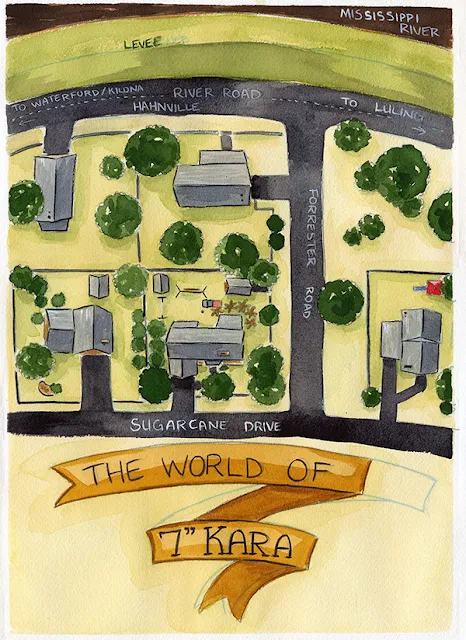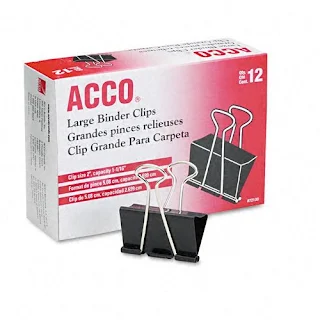Watercolor Basics: Materials You'll Need to Get Started
Watercolor Basics: Introduction
Watercolor Basics: Why Watercolor?
Watercolor Basics: Watercolor Terms You Should Know
These products are my personal recommendations, based on years of testing and years of painting watercolor comics like 7" Kara. The internet is full of conflicting opinions on how to begin with watercolors, so you should always do your own research before investing a lot of money.
For Immediate Start
Papers
 |
| Image Source |
Fluid Watercolor Block (pre- stretched so you can get painting ASAP)- I use these for convention mini watercolors
 |
| Image Source |
Canson XL - This was used for Gizmo Grandma pages, and I use this as my scrap watercolor paper for YouTube demonstrations
 |
| Image Source |
Fluid 100- A nicer version of regular Fluid watercolor paper, this has a higher rag content without costing an arm and a leg.
 |
| Image Source |
Canson Montval
This is actually what I use for 7" Kara pages, as it's affordable and runs through my printer. I use nicer watercolor paper for standalone illustrations.
Brushes
 |
| Image Source |
Cotman Watercolor Mop
You want to avoid using too many synthetics when you start out, as they tend to be stiffer than natural hair brushes and perform differently. I recommend reintroducing synthetics later on, for the unique properties they have to offer.
 |
| Image Source |
Blick Master Kolinsky Sable
If taken care of properly, these brushes will last you a long time, and are well worth the investment. Blick's Master Kolinsky brushes perform well, and are an affordable addition.
Pointed Round 2
Pointed Round 4
For larger rounds, adding a few synthetics or cheaper natural fibers is a good way to stretch your dollar and still have access to larger brush sizes. Although I don't care for squirrel for fine details, it works well for applying glazes and large areas of color.
Round 6
Round 10
If you want to paint large, a synthetic round is fine. I've used Neptune brushes for years for my convention watercolors.
 |
| Image Source |
Round Size 16
Synthetics are fine for washes and flats, especially larger sizes.
 |
| Image Source |
Wash/Flat:
1" Flat
Many of these brushes will continue to serve you well, even after you've acquired more supplies.
Paints
Eventually you'll need to decide if you want to work with pans, tubes, or both, but I recommend you start with pans, as they tend to last a little longer.
 |
| Image Source |
Winsor and Newton Compact Set
This set comes with fourteen half pans: Burnt Sienna, French Ultramarine, Permanent Alizarin Crimson, Permanent Rose, Permanent Sap Green, Raw Umber, Cadmium Scarlet, Chinese White, Winsor Blue (Green Shade), Winsor Green (Blue Shade), Winsor Lemon, Winsor Red, Cadmium Yellow Pale, and Yellow Ochre
This is the set I started with, and as I collected pans and tubes, I eventually moved on to an empty metal palette. I recommend starting with quality watercolors, as they'll give you the best results and will last you a long time. A travel set should give you a good basic assortment of colors to start with.
 |
| Image Source |
White gouache
Other
 |
| Image Source |
Faber-Castell Watercolor Cup
This collapsible cup features a crenulated top, perfect for balancing your brushes on. While you COULD use a regular drinking cup, so many artists have mistaken sipped their cleaning water that it's become an artist trope. I've never made that mistake when using these cups.
Paper Towels (I recommend Viva)
Paper towels are always handy to have in the studio- for cleaning up messes, to help with stretching pages, to dab up excess paint. I like using Viva paper towels- they're strong, fairly reusable, and you can purchase them without a surface texture.
Brush Storage
Below are several options for brush storage, I recommend you find one that works for you. I use a large bamboo cup to store my in-use brushes, which leaves them open to moth damage and marauding cats.
Cups
Bamboo Cup
 |
| Image Source |
Brush Easel
 |
| Image Source |
Bamboo Roll
Pencils/Inking Utensils (need to be waterproof when dry)
Microns
Pigma Pro
Multiliners
Sailor Mitsuo Aida
I have reviewed most of the above here on the blog- just search in the Google searchbar above for the pen you're interested in.
To Invest In:
If you think you're going to watercolor for the longhaul, here are the supplies I recommend you invest in, to add to your collection of the above supplies.
Papers
 |
| Image Source |
 |
| Illustration painted on Canson Arches paper |
Arches- I use Arches for standalone 7" Kara illustrations, because while I love the paper and how it takes my paint, it's too expensive to use for comic pages and details can sometimes become fuzzy if you work fairly small.
 |
| Image Source |
 |
| Botanical studies painted on Shinzen Handmade watercolor paper |
Shinzen (Handmade)- Shinzen is a handmade paper with a unique rough texture, making it interesting for watercolor studies, but not ideal for watercolor comic pages.
 |
| Image Source |
 |
| Illustration painted on Winsor and Newton's Cold Press watercolor paper |
Winsor and Newton Cold Press Watercolor paper- Winsor and Newton Cold Press Watercolor paper is a thicker watercolor paper with a pronounced texture. I have used it for watercolor studies as well a pastel illustrations.
 |
| Image Source |
 |
| Microfashion studies painted on Fabriano Artistico watercolor paper. |
Fabriano Artistico- Fabriano makes several grades of watercolor paper, including Fabriano Studio, their budget watercolor paper, but I like Artistico the best out of what's on offer. Artistico is also available in bright white, if you find natural paper tints too subtle.
 |
| Image Source |
 |
| Watercolor map painted on Canson Moulin du Roy watercolor paper |
Moulin du Roy- Like Arches, I really enjoy Canson's Moulin du Roy, but its too expensive for regular comic use. I love using it for standalone illustrations, and find it's very similar to Arches in how it handles paint.
Brushes
If you haven't yet, now is a good time to invest in some nice sable and kolinsky brushes. Squirrel brushes are fine for general coverage (like blocking in a page with basic colors), but kolinsky is king for details.
Creative Mark Rhapsody Brushes:
2, 4, 6 round
Winsor and Newton Series 7
Paints
As you become more comfortable using watercolors, not only will you need to replace used half pans, but you'll find yourself picking up new colors, brands, and types of color when you hit the art store. A tube here, a pan there, soon you'll have a collection of paints you enjoy using, and colors you prefer to work with. Below are a few of my favorite colors, listed by brand.
Holbien
Neutral Tint (one of my favorite conveyance colors!)
Hooker's Green
Cherry Red
Winsor and Newton
Green Gold
Payne's Gray
Qor
Quinacridone Gold
SoHo (non archival, very inexpensive watercolors)
Opera Rose
Perylene Blue
Palettes
As you collect paints in tubes and pans, you're going to need somewhere to store them. I've used the below metal palette for four years, and can probably continue to use it indefinitely, so long as I occasionally clean it out, and refill the pans.
 |
| Image Source |
Empty Metal Palette
 |
| Image Source |
Empty Plastic Palette (for tube paints)-Along with my metal palette, I also own the above Mijello palette to store my tube paints. The Mijello palette is fairly airtight, so if you like to work with your tube paints still wet, it can help keep your paints open longer.
Other
Additional Faber-Castell Watercolor Cup- I recommend you work with at least two water cups- one for dirty (rinsing) water and the other for clean (filling paint wells, mixing colors, blending out, scrubbbing)
Stretching Supplies
If you purchase your paper on tapebound pads, you're going to need to stretch your pages. Below are the supplies I use to stretch my illustrations and 7" Kara pages.
 |
| Image Source |
Bulldog Clips- For stretching watercolor paper
 |
| Image Source |
Binder Clips- For stretching watercolor paper
 |
| Image Source |
Gatorboard- For stretching watercolor paper
 |
| Image Source |
3M Blue Painters Tape- For stretching watercolor paper
 |
| Image Source |
Spray Bottles- For stretching watercolor paper and spray techniques. I'll cover these techniques in later posts.
 |
| Image Source |
Wax Crayons (for resist). I'll cover wax resist techniques, as well as other forms of resist, in later posts in this series.
Masking Fluid- For reserving areas. Masking fluid blocks further layers from penetrating the paper until the dried fluid is removed. I have never had much luck using this.
 |
| Image Source |
Frisket Film- A clear plastic film that serves much the same function as masking fluid. I find that water makes the adhesive gummy.
Natural Light Lamps- You can find out more information on these lamps and bulbs in this post. Examples- Ott Lites, Sunlight Lamps, Daylight bulbs. These are important for color accuracy if you paint inside, as indoor lighting tends to either be warm or cool, and can screw up your perception of color.
Second Opinions
Recommended Watercolor Supplies
Watercolor Art Supplies List
If you enjoyed this post, or found it entertaining or helpful, please take a moment to share it with your friends using the social media buttons below the post. Your positive word of mouth is a reward for all my hard work, and your word will mean so much more to your friends. Signal boosting my content takes only a moment of your time, but helps me grow a larger audience. If you have any questions, please send me an email using the handy contact form in the left sidebar- it sends me an email and only takes a moment of your time. Finally, if you enjoy content like this, and want to ensure that I can continue to make it, please check out my Patreon for information on how to join the Nattosoup community.








Comments
Post a Comment